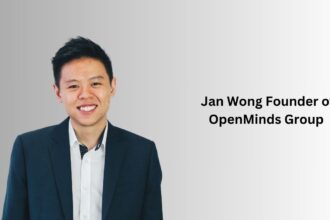According to new research by LinkedIn, over 8 in 10 (81%) workers in Singapore who are returning to the office, have said that flexible work arrangements are important to them, and over three-quarters of business leaders (76%) say they recognise that providing greater flexibility to their employees is key to positively impacting company culture.
However, there are some reservations about the impact of a distributed workforce.
Close to half of employees (49%) believe that the lack of face-time with their boss and senior team members directly slows down their career growth, and 45 percent think there is still a negative stigma associated with working from home.
Additionally, business leaders cite challenges in building team morale (37%) as the top potential issue with a distributed workforce and fear employee disengagement. Furthermore, the loss of face-time (55%) and unavailable employees (48%) makes it more challenging to establish meaningful relationships with their own customers.
Various benefits to flexibility at work, including increased work-life balance and improved workforce diversity
The majority of workers prefer a flexible working arrangement — close to 6 in 10 (59%) would prefer a hybrid mix of working in the office and from home; just over 2 in 10 (21%) would prefer to work from home full time, and 2 in 10 (20%) would prefer to work in an office full time.
They cited positive benefits from working from home, including increased work-life balance, improved personal relationships, and better physical and mental health.
Over 7 in 10 (76%) of business leaders, too, view flexible working arrangements in a positive light, as they enhance work-life balance, reinforce trust and build resilience. There is also healthy agreement that a flexible approach to work will enable more diverse talent (74%), in part because more people can overcome geographic or systemic barriers to participate in the workforce (56%).
Business leaders are facing continued pressure to ensure flexibility in the workplace
Business leaders feel pressured to implement flexible arrangements to align with Covid-19 guidelines by the Singapore government (53%) but also by employees (67%). In fact, 40 percent of existing employees have already requested a flexible schedule, and business leaders have reported (56%) that prospective applicants are actively discussing flexible working policies before they even decide to join.
In terms of the ideal flexible working arrangement, the sweet spot for workers and businesses in three days at the office and two days of remote work. Almost 2 in 5 (37%) workers prefer this arrangement, while half of the business leaders in Singapore favour 3-4 days at the office and 1-2 days at home.
Business leaders are committed to resolving the challenges that come with flexible work
Our research shows that business leaders are very much committed to empowering their workforce in a flexible working environment and alleviating anxieties around the negative impact of flexible work. 71 percent of all leaders say that they have introduced or are planning to introduce training courses to facilitate employee collaboration and productivity in a flexible working environment.
Close to half of employers surveyed believe that L&D initiatives will support employees’ efforts to keep their skills up-to-date, while also providing an avenue for employees to connect and learn together in a community-based environment. In introducing these programmes, businesses are able to cultivate a more inclusive work environment and keep employees engaged.
Feon Ang, Managing Director, APAC, LinkedIn, says: “While flexibility is in-demand amongst employees and business leaders, it needs to be thoughtfully implemented, to ensure that we meet the challenges that come with it head-on. Leaders must think about employee engagement, development opportunities and career progression through a new lens — one that puts people first and not location. Above all, we must build workplace cultures based on trust, where there can be an open conversation between leaders and employees about the challenges that come with this flexibility. This is how we can break the stigma and thrive in the future of work.”
To support businesses and workers in this future of work, we have rolled out these new features.
- New #OpenToWork filters to attract relevant opportunities: Professionals can now use filters for remote, hybrid, or onsite roles within Job Search and the #OpenToWork feature on their profiles. They can also use these filters to set relevant job alerts and preferences for the way they want to work, especially as the professional landscape prepares for a flexible working environment.
- Highlight vaccination norms and work policies via Company Pages: Employers will now be able to highlight office policies, benefits, vaccination requirements via Company Pages to attract the best hires, comfortably. Professionals can use this to gain more insight into workforce policies on Company Pages, so they can learn more about the companies they are interested in.
- All-new Services Marketplace to manage freelance projects effectively: LinkedIn has launched a new ‘Services Marketplace’ for professionals who seek more flexibility than what a traditional job can offer. Freelancers, contractors, and small business owners can now set up their Service Page directly from their profile, manage their projects, and promote specific skills and services of their businesses.
Check out Feon Ang’s blog post on some of the other regional trends and findings from LinkedIn’s Future of Work.

















